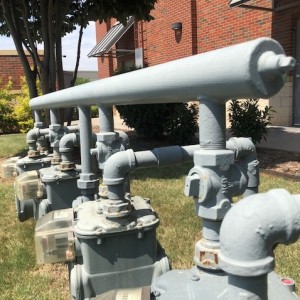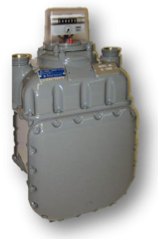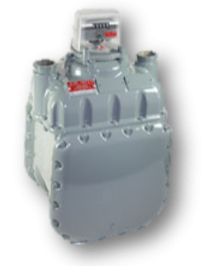A Behind the Scenes Look at Natural Gas Demand Calculation

A Behind the Scenes Look at Natural Gas Demand Calculation
Natural gas is often associated with the blue flame on the gas stove or furnace pilot light and warm clothes fresh from the gas dryer. In the past decade alone, this energy source has been the preferred route for more and more every day appliances and amenities. As contractors and utilities account for the growth in natural gas demand, they must determine the proper amount of natural gas to be provided to the structure. In order to understand the process, one should first grasp the concept of heat load, BTUs, and gas meter classifications.
The natural gas demand for a structure is the determination of the ‘heat load’. The heat load is defined as the amount of natural gas necessary for each appliance to run at maximum efficiency in a home or building. In determining the total heat load of a structure, the contractor much first assess how much natural gas each appliance uses and then add them together. These potential appliances include anything from the furnace to the stove. After determining the total heat load, the contractor relays this information to the gas utility so that the properly sized meter set can be provided.
The heat load of a structure gets converted into British Thermal Units (BTUs), which is the amount of energy required to raise the temperature of one pound of water by one degree Fahrenheit. Every gas appliance has its own BTU input rating, which is measured per hour. For example, an 80% efficient appliance means that if you put 100,000 BTUs in, you get 80,000 BTUs out. When measuring BTUs, one cubic foot equals 1,000 BTUs.
Gas meters are classified by flow rates per hour or the amount of cubic feet and are labeled as ‘Class (cubic feet)’. For example, Class 250 = 250 cubic feet, which means 250,000 BTUs (1 cubic foot = 1,000 BTUs). Below are the different gas meter classifications offered in the industry:
|
Gas Meter Classification |
Class 250 |
Class 425 |
Class 600-800 |
Class 1,000 and above |
|
Applications |
Residential homes |
Large homes |
Small businesses such as a restaurant |
Large businesses such as a hotel |
|
Picture of Gas Meter |
|
|
|
|
It is not uncommon for the installation of an additional natural gas appliance to influence the total heat load within a structure. Read up on the scenario below to see exactly how heat load, BTUs, and gas meter classification all correlate:
Scenario
Let’s say a house currently has a Class 250 gas meter (250 = 250 cubic feet). The owner then decides to install a pool in the backyard that is heated by natural gas. Due to the increase in gas demand, his 250 meter set can no long adequately support or measure the appropriate amount of gas to his household.
- Solution
The homeowner must upgrade to a larger gas meter, such as a Class 425 (425 = 425 cubic feet). In doing so, there’s a possibility that all other meter set components, such as the meter bar/valve or regulator, need to be switched out as well.
Natural gas is being applied to common household appliances more and more these days. In order to keep up with the growing demand, an accurate heat load assessment needs to be calculated, especially when the natural gas demand rises significantly within a structure. To learn more about heat load, BTUs, and gas meter classification, make sure to enroll in the ‘Natural Gas Measurement’ AYU course.




